Inspections ensure that party walls between townhome units meet fire code requirements. However, inspectors do find violations on some jobs, and fixing them can cause expensive delays in the construction schedule.
The International Residential Code (IRC) requires that a party wall between attached townhomes have a 2-hour fire rating and that each unit be self-supporting. One of the most common fire-blocking assemblies to comply with this requirement consists of 2 inches of gypsum shaft liner sandwiched between two framed walls and separated from those walls by 1-inch airspaces. Strips of shaft liner are also typically required at floor-to-floor transitions and usually every 10 feet horizontally. Aluminum breakaway clips ensure that if one wall collapses in a fire, it won’t take the other down with it.
To ensure code compliance and avoid delays and costs to fix them, pay special attention to penetrations, transitions, material choices, and air sealing. The first two are fire-code related, the other two concern moisture and energy performance.
Avoid Unwanted Penetrations in the Shaft Liner
After the shaft liner has been installed, it’s not uncommon for a trade to fasten blocking to the wall inside one of the units to support a temporary scaffold or brace. In some cases, trades will use nails or screws that are long enough to penetrate the shaft liner. The damaged section usually needs to be repaired.
Preventing this is a matter of specifying the maximum fastener length as well as specifying that fasteners can only be used in framing members and not the shaft liner.
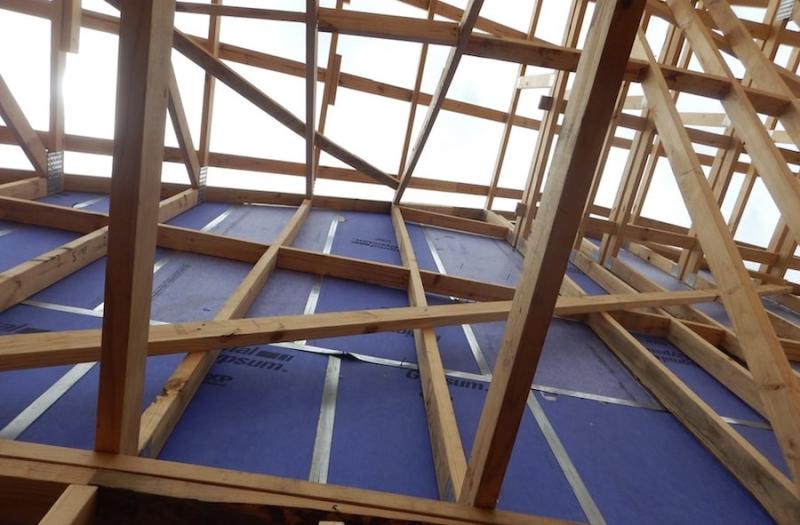
Note the puncture in the shaft liner below the angle brace. That area had to be replaced.
Properly Install Fire Blocking
As we assess homes under construction, we not only see incorrect materials, but also missing or incorrectly installed fire blocking at transition points—usually between the first and second floors.
The job supervisor should make sure all fire blocking is installed correctly before calling for an inspection. If not, the inspector will make you fix it, causing rework and rescheduling of the inspection, delaying progress.
Make the Right Material Choices for Party Walls
Per code, shaft liners can have a paper or a fiberglass mat facing, and a lot of builders use them because they are the less expensive option. Some products even come with “mold resistant” facing paper.
In reality however, these products are prone to mildew problems if they’re exposed to weather during the framing process, and that’s the case no matter how the paper is labeled.
That’s why we always recommend fire-resistant gypsum board with a fiberglass-mat face for the shaft liner. It will cost a bit more, but it won’t support mildew growth, even after it gets rained or snowed on before it’s closed up in the party wall.
Avoid Inadequate Air Sealing Inside Party Walls
Air sealing is an energy code issue, and in party walls it’s mostly done where the assembly meets the roof and exterior walls. Those intersections can be difficult to reach, but they’re important: A poor seal inside the party wall will affect the blower door test and can even prevent you from meeting your air leakage target.
The easiest, most effective way to seal these spots is with a fire-rated sealant or a fire-retardant spray foam. Making sure this is done right should be on the quality checklist.
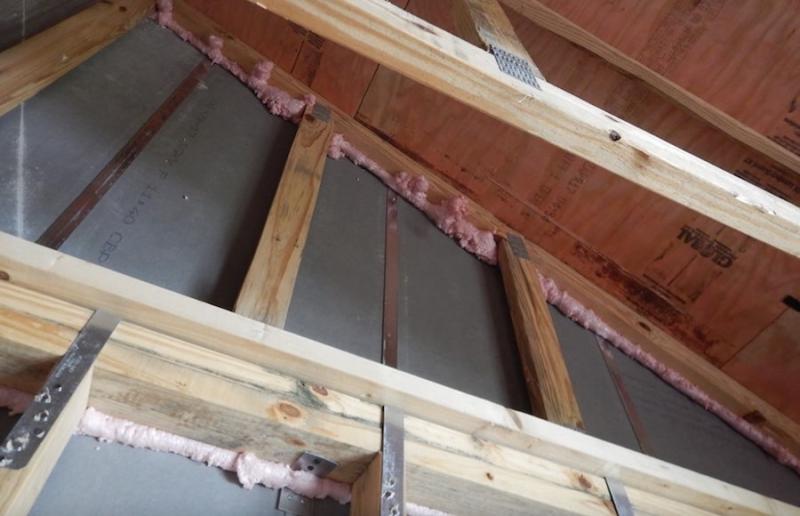
The low-expansion foam at the roofline is for general air sealing. It’s a good practice on all jobs, but is non-negotiable if the home will have to pass a blower door test.
Avoiding these problems is a matter of good supervision. You need to make sure that trades who work on the party wall know the details you require and get them right ... and that other trades working around it don’t damage the finished assembly.
It’s also a good idea to inspect each trade’s work right after they’re done. That way, if you do find a problem, you can quickly identify who is responsible, get them to fix it, and then train them not to make the same mistake in the future.
Richard Baker drives quality and performance in home building as the building performance manager on the PERFORM Builder Solutions team at IBACOS.
This piece originally ran as part of IBACOS and Pro Builder's joint Quality Matters series.

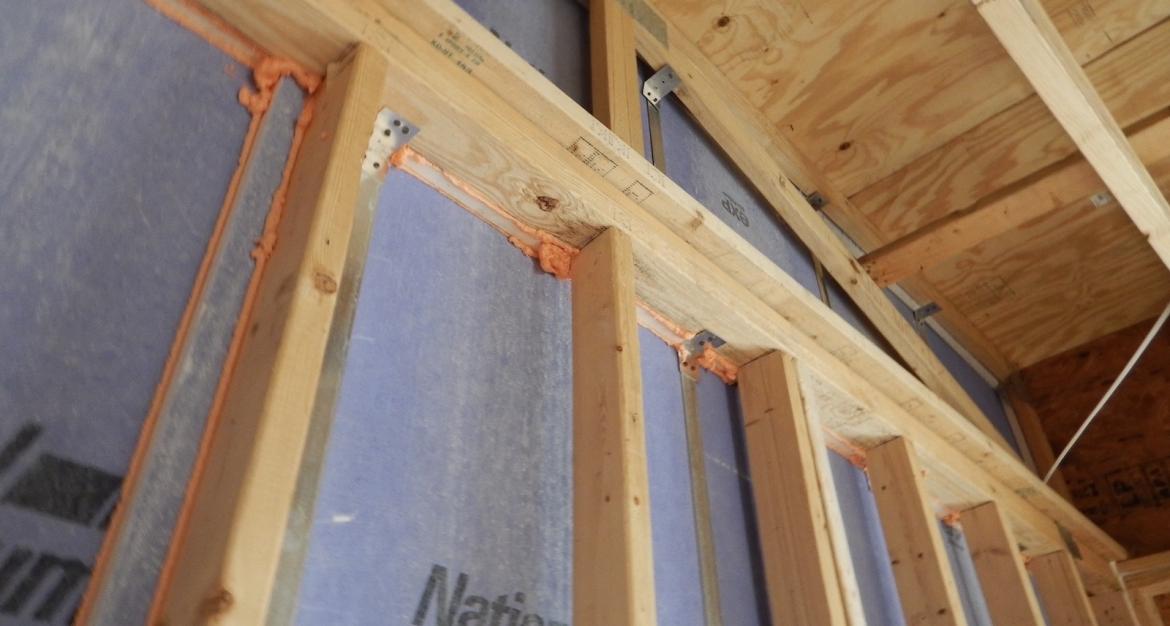
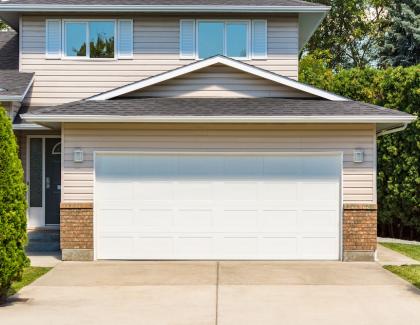
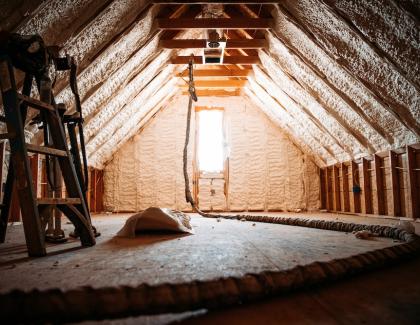
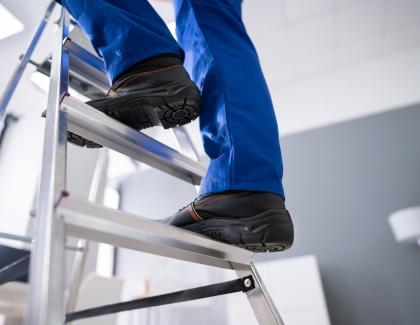
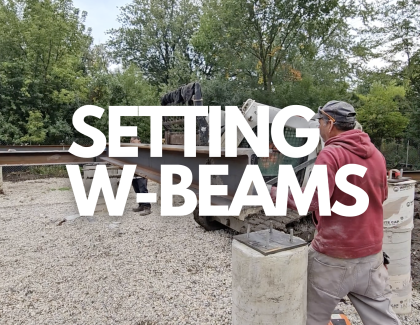
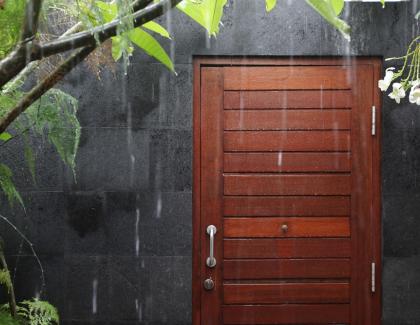
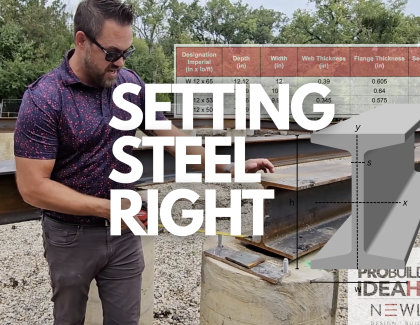
Add new comment